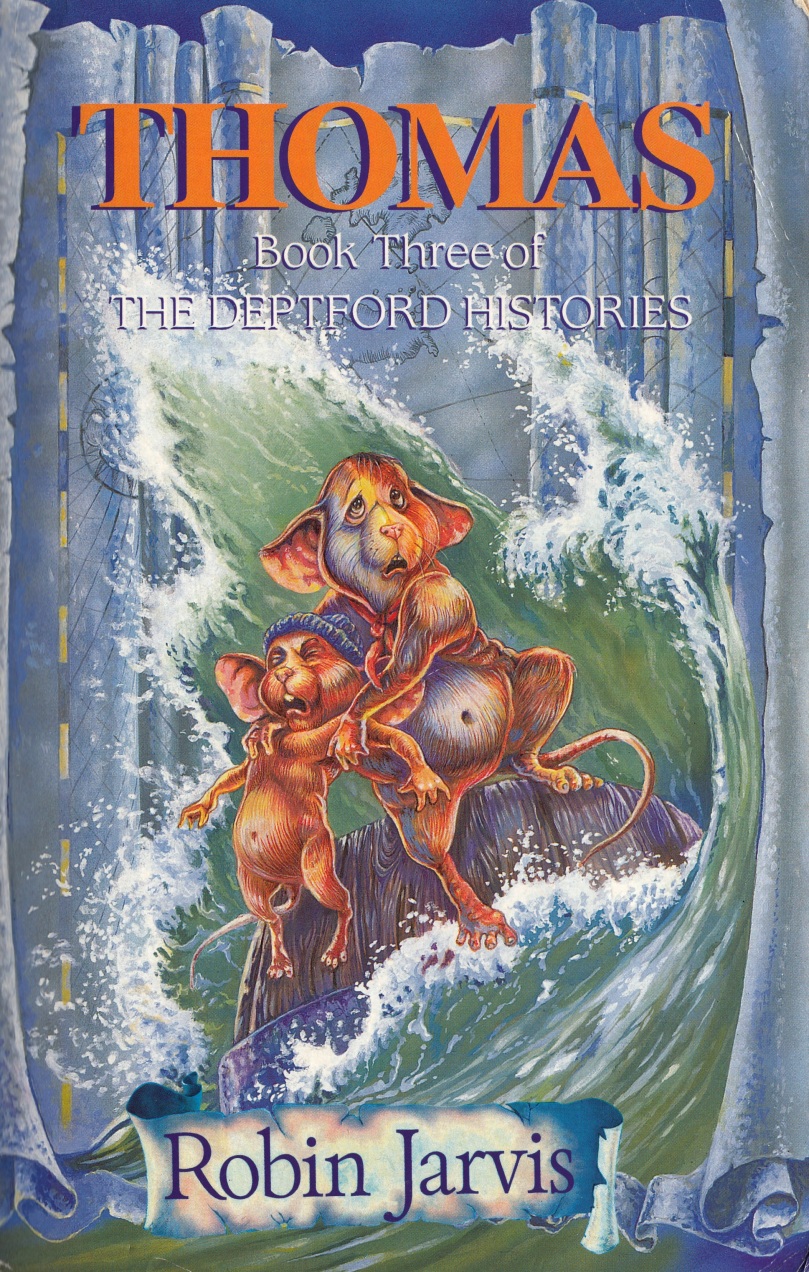
‘What a place,’ was all he could find to say.
Aufwader’s Thoughts: This is where things get a bit awkward for me, because even as I hiss in the faces of Hara’s forces and sneer at their city, I have to admit that it is a very pretty city. Doesn’t mean I don’t want to see its fair streets run with blood and all that good stuff, but there’s no slithering away from the bald truth that Hara is a truly fabulous setting. Even, dare I say it, one of Robin’s best.
This Gondolin of the Deptford Histories is a fascinating look at how the worshippers of the Green do their goody-goody thing in other parts of the world. Here at Myth & Sacrifice we all love the original Deptford Mice Trilogy, and I hazard that we were interested enough in the mousebrass-toting denizens of London and surrounding areas that we didn’t give much thought to wider Green Mouser culture during the reread of those books.
Far though it might seem from Audrey’s world, Hara is the stronghold which anchors the past to the present in the Deptford universe, and, though to say too much about this would be to commit the peelable offence of cross-book spoiling, to the future. (Stay tuned for part two of this point when we get to the Almanack next year.)
Like Greenwich, Hara has crouched on its hill through long and weary years, guarding its esotericisms close and presided over by an ancient and powerful ruler. It is connected to the present through Thomas, who, as we are wryly aware, plays a large role in The Deptford Mice. To join it up with the past, we need only contemplate the notion that this age-old city of the Green was probably up and running long before the first squirrel annoyed the first bat (or vice versa) and the wars that ended in Ysabelle’s time, began. What a place, indeed!
Matt’s Thoughts: I also agree that this is possibly one of the greatest Jarvis settings ever. Completely fictional, and thus awesome. Also, I can’t help but wonder – where is the city of Hara actually located? Not what country it’s in, but physically located in that country. For instance, we know the Deptford Mice live in empty houses, we know the Greenwich squirrels live under the ground. So you can imagine all these places actually existing.
But an entire city with a massive statue of the Green Mouse towering over it? Is it built deep in the jungle somewhere where no human ever sees it? Does the same magical mist that protects the ships of Hara from being seen by evil eyes also protect them from human eyes?
I don’t even want to overthink it too much anyway, because regardless of how it works, the city is just a brilliant concept overall and another layer to the mythology of the Green.

Hara is wonderfully exotic and fascinating. We learn so much about it even before our heroes arrive there, from the legend of its founder, the first Holy One, to the hilarious tale of Nakir the fruit merchant and those conniving bananas! 😛 Then the city finally comes into view, and it is glorious! Most impressive of course is that enormous carving of the Green Mouse on the side of the mountain, though it is quite ironic that the glow of the green jewel he wears comes from an artifact of an opposing force!
I know he’s just one of many characters mentioned who have their own stories to be told, but I really want to know more about the warrior king who founded Hara, renounced his riches and became the sadhu. That would make for such an interesting book. The Histories should have been a whole series rather than a trilogy. 😉
Out of all the new animals we meet in this book, my attention is naturally drawn to the Indian palm squirrels who are part of the crew of the Chandi! I wonder how they relate to the squirrels of Britain. Do they have similar customs? Interestingly, while looking up the species just now, I learned that palm squirrels are considered sacred in India and they aren’t to be harmed. There is a Hindu legend about how they got their stripes: pleased with their dedication during the construction of the Rama Setu bridge, Lord Rama caressed their backs and ever since they have borne the mark of his fingers there. That reminded me of the Almanack’s tale of how the robin got its red breast, the noble scorchmark from the Green’s forge.
LikeLike